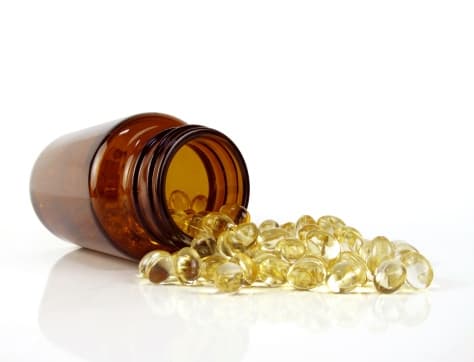Doctor Explains Why Osteoporosis is a Pediatric Disorder, the Importance of Vitamin D
2.2.2015 | Seattle Children's Press Team

When people think of osteoporosis, most likely, they wouldn’t think about kids and teens. However, Dr. Michael Goldberg, director of Seattle Children's Hospital's Skeletal Health Program, says osteoporosis is actually a pediatric disorder and childhood is the best time to think about bone health. By thinking about bone health at an early age, individuals can ensure they have strong bones later in life.
“Bones are very much alive,” said Goldberg. “From birth until age 35 you make more bone than you dissolve. From age 35 on, you dissolve more bone than you make. Think of it like needing a bone bank account. You need to make a lot of bone deposits early on; otherwise there won't be much left when you're old.”
And the best way to strengthen and build bone is with calcium and vitamin D.
“We know that calcium is important to build bone,” said Goldberg. “How the calcium gets into the bone is an intricate system of having vitamin D and calcium. If you don’t have vitamin D, you can’t absorb calcium from the intestine. Both are important to building bone.”
How much vitamin D do we need?
In the U.S. today, the rate of disorders of bone strength are increasing due to a lack of vitamin D. Without vitamin D, our bodies are unable to make bone, which can leave children and teens susceptible to fractures, stunted growth, bowed legs and even rickets.
According to Goldberg, there are many reasons children and teens aren't getting the recommended amount of vitamin D, including geographic and cultural factors. To build bone and keep bones healthy and strong, children need to consume 400 international units (IU) of vitamin D each day. While vitamin D is found in some foods, unfortunately consuming the recommended amount can be difficult without a supplement.
The best sources of vitamin D in foods are:
- fatty fishes and fish oils, such as salmon, mackerel, and cod liver oil
- egg yolks
- vitamin D-fortified milk and other dairy products
Goldberg encourages parents to make sure their children are getting 400 IU each day of vitamin D, whether that’s through liquid baby drops, gummy vitamins, vitamin D supplements, or multivitamins. As children and teens age, the amount of vitamin D they need daily increases. According to the Institute of Medicine (IOM), teens should get 600 IU of vitamin D per day.
Why aren’t kids getting enough vitamin D?
Among other factors, cultural trends have contributed to limiting the amount of vitamin D children and teens consume in their diet.
“Most foods that contain vitamin D have been ‘fortified’ but, unfortunately, cultural and dietary trends have encouraged people not to buy these types of foods,” said Goldberg. “Milk also has vitamin D, but not a whole lot.”
In addition, while there are many obvious advantages to breastfeeding/chestfeeding, breastmilk/chestmilk has very little Vitamin D, which is why Goldberg suggests starting children on vitamin D supplements from birth.
Other factors affect the amount of vitamin D children get, including less exposure to UV rays, dark skin tones, certain health conditions and obesity.
UV rays – Some parts of the country receive more sunlight than others. In the Pacific Northwest especially, children are susceptible to vitamin D deficiency since there is not a lot of UV exposure. Also, many children play outdoors less and stay inside more. Also, when children are outside they’re urged to wear sunscreen to reduce the risk of skin cancer.
Skin tone – Darker skin tones block the sun needed to produce vitamin D. Children with darker skin tones should consult their doctor to make sure they are getting the recommended amount of vitamin D.
Health conditions – Some health conditions can affect how the body absorbs nutrients, like vitamin D. Also, certain medications, like steroids and seizure medications can affect how the body metabolizes vitamin D as well.
Family history – If a family member has osteoporosis, a child is at greater risk of getting the condition too, 60% to 80% more likely.
Obesity – Children who are obese are at an increased risk for vitamin D deficiency.
“When a child is obese it’s harder for vitamin D to work,” said Goldberg. “It’s absorbed into the fat rather than where it’s needed in the body.”
Overall, to ensure children get the recommended daily amount of vitamin D, Goldberg encourages children take a vitamin D supplement daily and incorporate vitamin D-rich foods into their diet.
“We need to set ourselves up for success at an early age,” said Goldberg. “As soon as a child is born, it’s time to start thinking about bone health.”
Resources
- Vitamin D: On the Double – Healthy Children